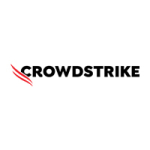What is our primary use case?
Our use cases are primarily on-premises vulnerability management and remediation, external attack surface management and vulnerability scanning.
How has it helped my organization?
The benefits I've seen are twofold. The biggest benefit is from a security operations perspective, where we are able to drive our security posture upwards by remediating any discovered vulnerabilities. We can also automate the remediation process. The other big benefit is executive reporting because it's very easy to produce trends over time to report on risk.
What is most valuable?
The most valuable features are vulnerability detection, patching capabilities, and remediation. Cloud security posture management is also very valuable. I find these features valuable because getting a unified view of your cloud security posture across different environments is not always easy. For example, you might have most of your resources sitting in Azure, but you might have a couple of workloads in AWS. Naturally, there are different tools that report on that, so it's invaluable to have those pulled into a single dashboard so you can drive your remediation from a single platform.
What needs improvement?
If anything, I would like to see the user interface modernized a bit more. Also, there are a lot of various modules, and if they could be consolidated into fewer options, it would make the buying experience easier.
For how long have I used the solution?
I've been working with Qualys VMDR for the last three years or so.
What do I think about the stability of the solution?
We haven’t faced any issues, the solution is very stable.
What do I think about the scalability of the solution?
Because the management sits in the cloud, you don't have to worry about management appliances or anything like that on-premise, so the solution is very scalable. You can split your assets into asset groups and delegate management to different teams. Around 1,000 users are using Qualys in my organization across 60 locations.
How are customer service and support?
We've had very few technical issues, and the customer support team has quickly resolved issues we've had.
How would you rate customer service and support?
How was the initial setup?
In the first step, Qualys provisions your cloud-based management instance. From there, you get a small, lightweight agent deployed by deployment technology like Microsoft Intune, in our case, SCCM, or any deployment technology.
We worked with BCX Namibia and the Qualys team in South Africa while deploying the solution. It took two weeks to deploy the solution. The solution is not difficult to maintain because the management component is cloud-based and is taken care of by Qualys. Any agent upgrades that might be necessary are very seamless.
What was our ROI?
We have seen an ROI using Qualys. Most breaches nowadays are because of a vulnerability that is exploited. By virtue of being able to identify and remediate these vulnerabilities, I believe we are significantly driving our cybersecurity risk downwards.
What's my experience with pricing, setup cost, and licensing?
The pricing is very competitive, especially because Qualys is integrated and does vulnerability management and remediation patching in one solution, so there's no need for a separate patching solution. You can also get very granular with the amount of IP addresses you can cover. You can go from as few as 16 IP addresses to many more. And the Qualys team is also willing to work with organizations to make the solution make commercial sense. The prices are fixed. We have a yearly subscription model based on the number of IP addresses we’re scanning.
Which other solutions did I evaluate?
We evaluated vulnerability management in Microsoft Defender, but we found the reporting and functionality lacking compared to Qualys. And then the Microsoft licensing costs were also a bit of a dealbreaker.
What other advice do I have?
If you're considering implementing Qualys in your organization, work with a strong pre-sales partner. Evaluate the product, make sure it does what you need, make sure you buy the features that you need, and make sure to use the training and onboarding material that Qualys has made available on its website so you can leverage the solution's full capability from the start. I rate Qualys VMDR a nine out of ten.
Which deployment model are you using for this solution?
Hybrid Cloud
If public cloud, private cloud, or hybrid cloud, which cloud provider do you use?
Microsoft Azure
Disclosure: My company does not have a business relationship with this vendor other than being a customer.





















